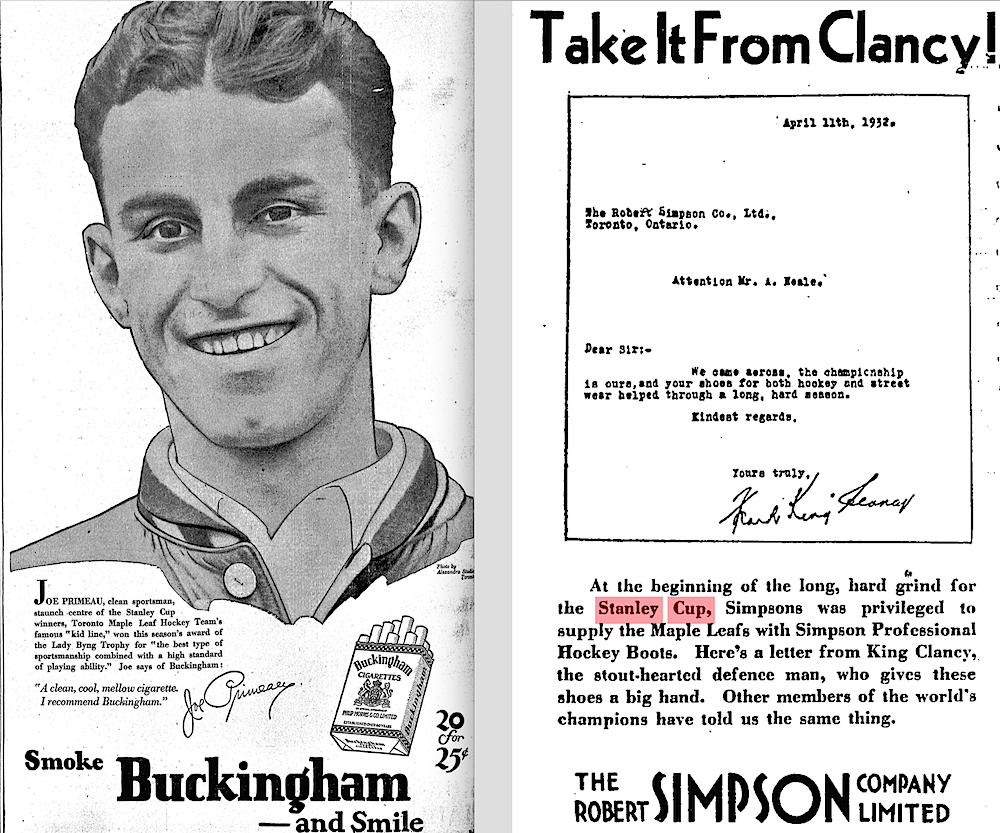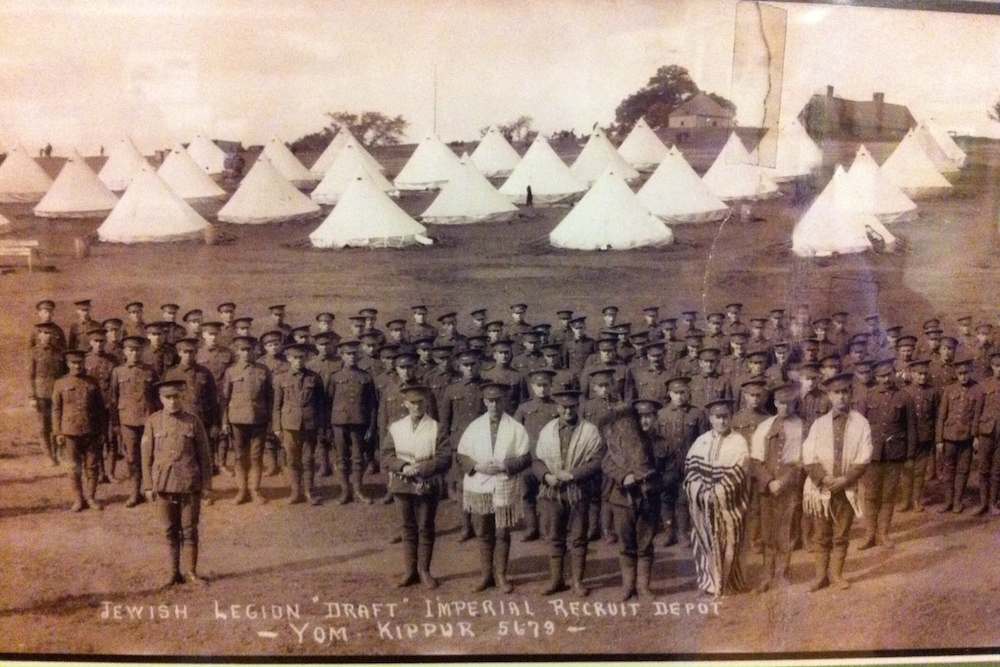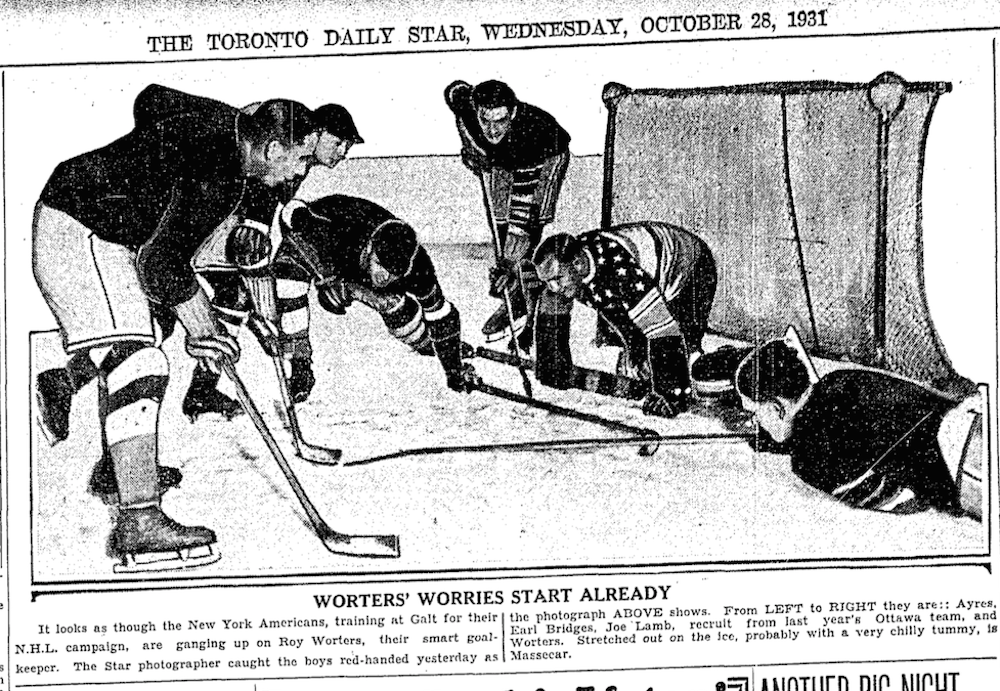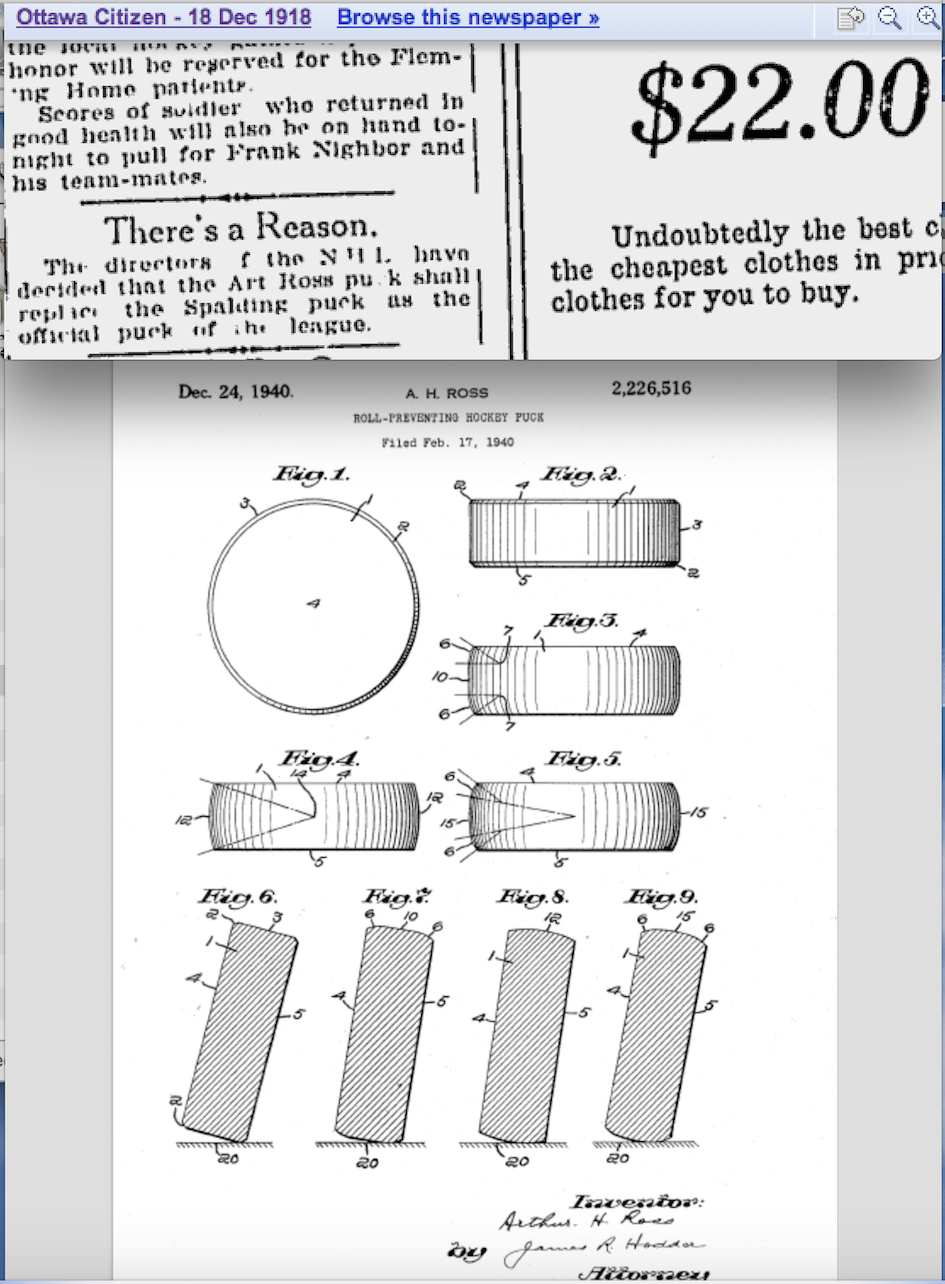The Canadian Football League runs deep in my family. My father and his father were at many of the classic Grey Cup games played at Varsity Stadium in the 1950s. My grandfather had Toronto Argonauts season tickets for years, and I attended my first game in his seats with my father at CNE Stadium in 1971. After my grandfather died in 1972, my father was surprised to learn that those tickets actually belonged to my grandfather’s business and didn’t transfer to him. So, in 1973 my father ordered his own season tickets for our family. This meant a move from the old, covered grandstand to the new bleacher seats on the other side of the field.
In those days before the stadium was renovated for the Blue Jays, CNE Stadium held 33,000 fans and was always sold out for the Argos. I remember attending a game in August when the temperature was 100 degrees (no Celsius back then!) and a playoff game in November that ended in a blinding blizzard. But with Ottawa set to face Edmonton in the Grey Cup this weekend, I have a memory of a very different sort. Many will remember Ottawa’s last-second victory (over Saskatchewan) with the Tom Clements to Tony Gabriel touchdown pass in 1976. Others, the 1981 game where Dave Cutler’s last-second field goal kept the Eskimos dynasty alive with a win over the surprising Rough Riders. But I remember 1973.
 My first football team. I’m in the top row, next to our enormous coach.
My first football team. I’m in the top row, next to our enormous coach.
The first Grey Cup game I remember watching is 1971, when Leon McQuay’s late fumble sealed Toronto’s loss to Calgary. I started playing football in 1972, and my greatest athletic accomplishment remains leading our Zion Heights Grade 9 intramural football league in scoring in 1977. I loved football. My brother David liked it a lot. Jonathan … not so much. Still, my parents tried to keep things fair. We all took turns going to games, and we all got to fill out the ballots in the program to vote for the Shopsy’s team MVP. One lucky winner among the MVP voters would receive two tickets to the 1973 Grey Cup game which was in Toronto that year. Jonathan won! He couldn’t really have cared less, and I wanted to go so badly… but it was his ballot that was drawn and his name on the letter that arrived at our house with the tickets, so he went to the game and I watched on television.
Long before any of us starting watching, Albert Henry George Grey, the 4th Earl Grey, was Canada’s Governor-General from 1904 to 1911. He was a big sports fan – as many of his predecessors had been. By 1908, he had already donated namesake trophies for the Dominion trapshooting championship and for horse racing.
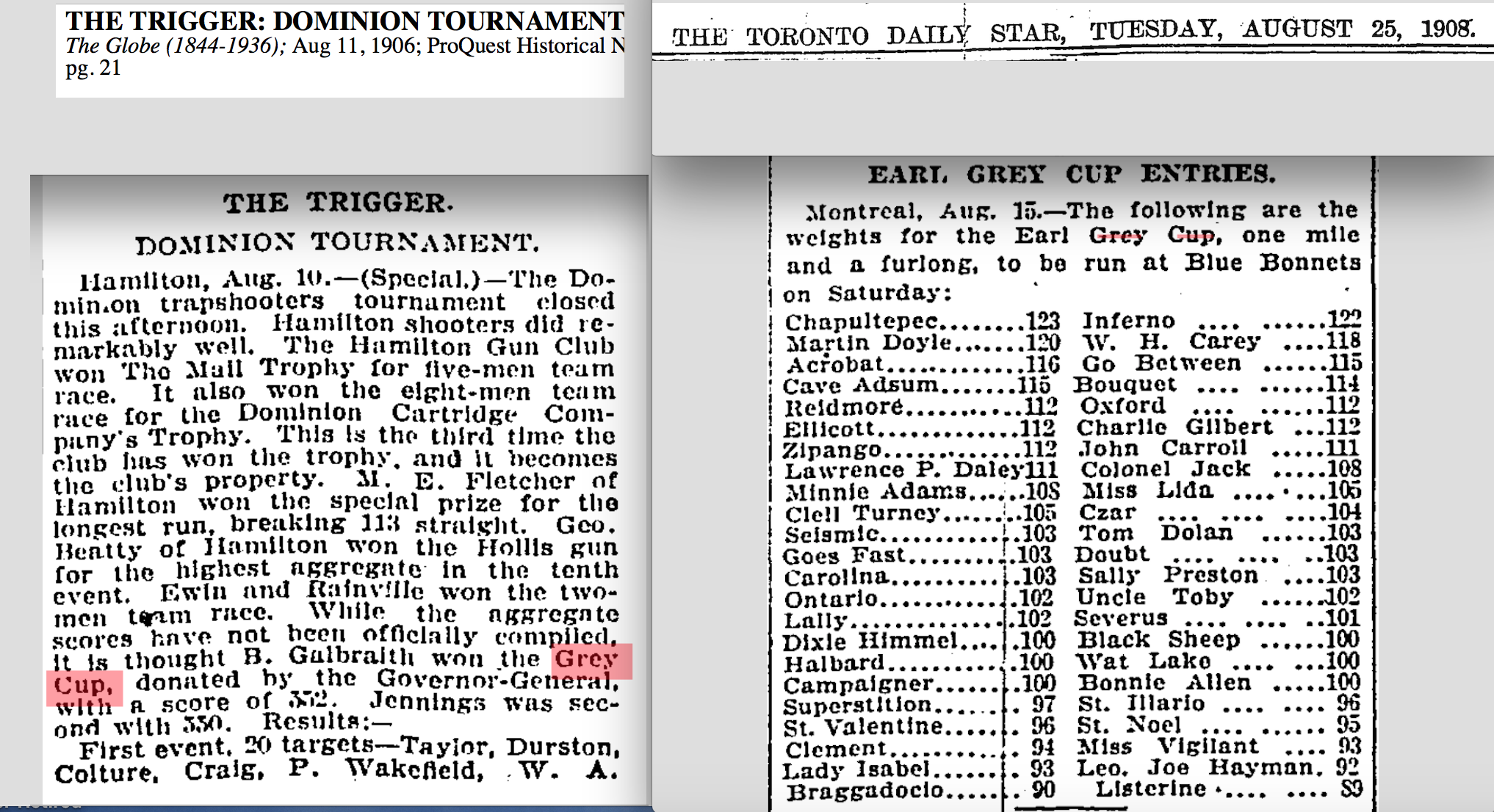
According to almost everything you’ll ever read about the history of the Grey Cup, the Earl originally intended to donate a new trophy for the senior amateur hockey championship of Canada in 1909 since the Stanley Cup had been recently taken over by the professionals. But Canadian businessman Sir Hugh Montagu Allan had already beaten the Govenor-General to the punch, so he gave his trophy to football instead.
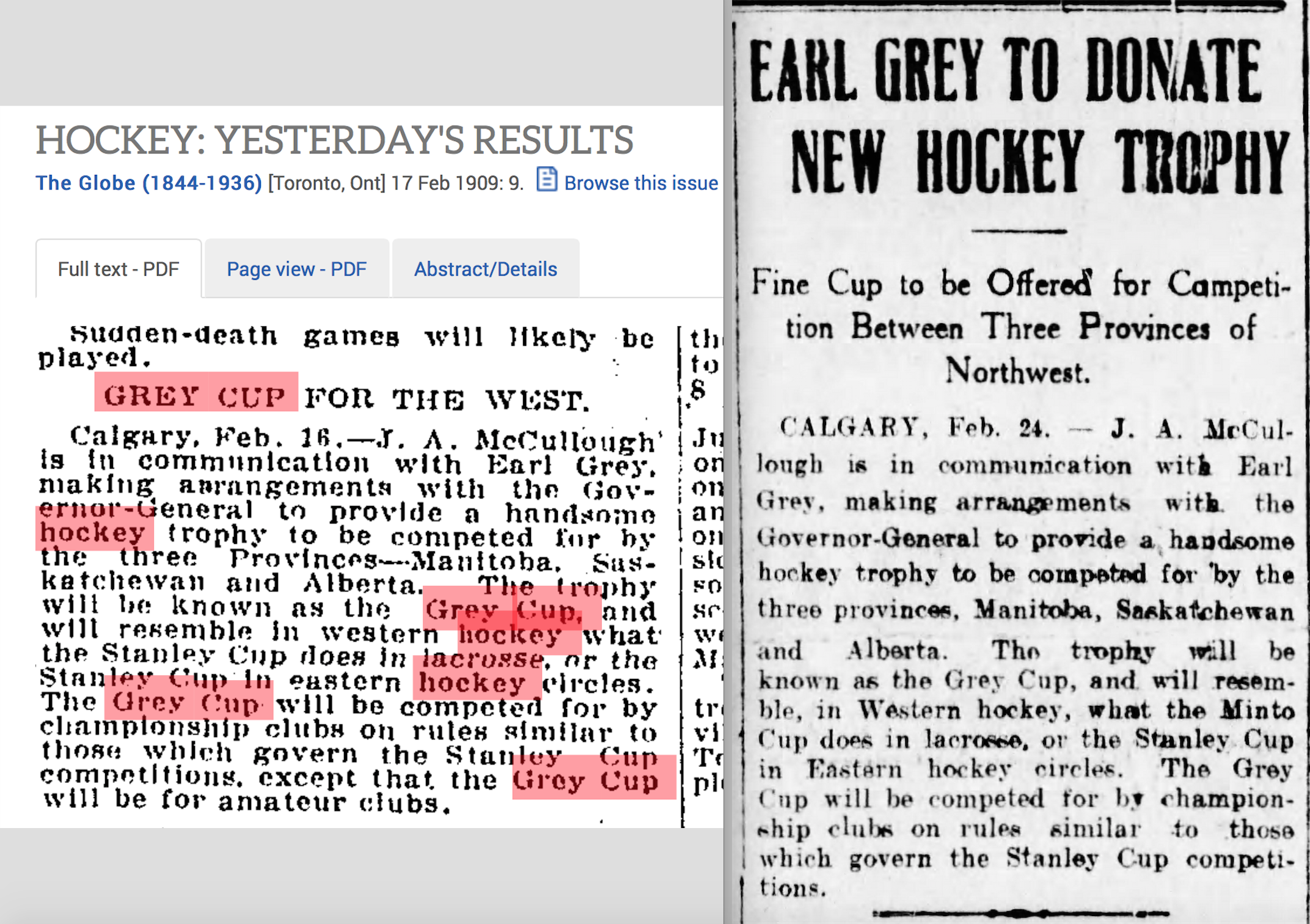 The article on the right is from Vancouver Daily World on February 24, 1909.
The article on the right is from Vancouver Daily World on February 24, 1909.
But this story is only partly true. In an era when so many Canadian championships were contested exclusively in the east, the announcements concerning Earl Grey’s new trophy in February of 1909 clearly state that it was intended only for competition among western hockey teams in Manitoba, Saskatchewan and Alberta.
 From the Toronto Daily Star, June 1, 1909 and the Brandon Weekly Sun, June 3, 1909.
From the Toronto Daily Star, June 1, 1909 and the Brandon Weekly Sun, June 3, 1909.
It’s unclear what caused the change in sports, but on June 1, 1909, it was announced that the Grey Cup would be awarded for the amateur rugby football championship of the Dominion of Canada … which had been contested since 1884, but apparently without any tangible reward. (Ironically, no Western Canadian team would be able to compete for this new trophy until 1921!)
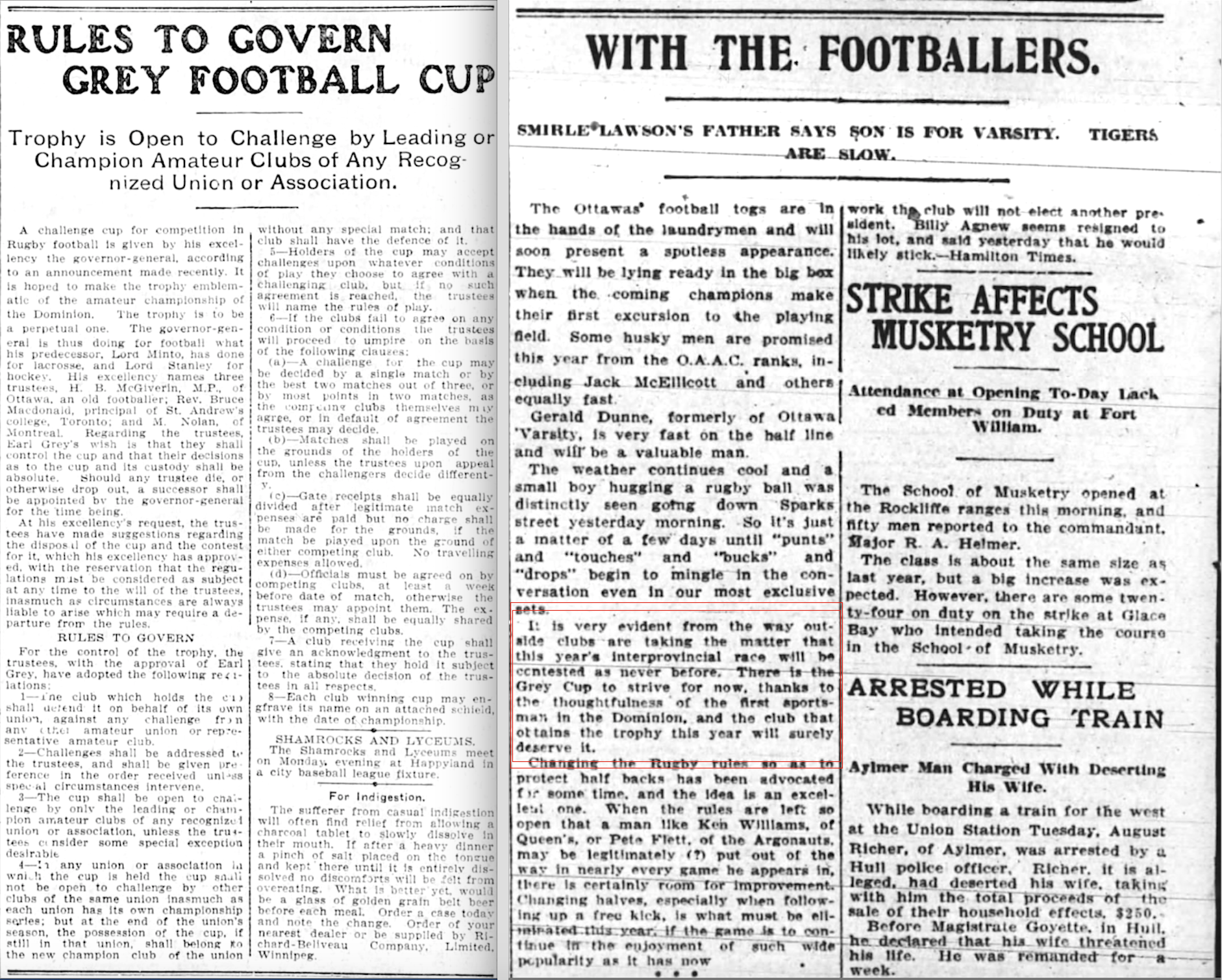
From the Winnipeg Tribune, June 12, 1909 and the Ottawa Journal, September 2, 1909.
By the time football teams were preparing for the new season in September of 1909, the Grey Cup was already being touted as a boon to the game. First won by the University of Toronto on December 4, 1909, the evolution of the trophy and its many great moments are much to long to go into here, but the Grey Cup remains a unique part of Canada’s sporting history – and of my family history too.
